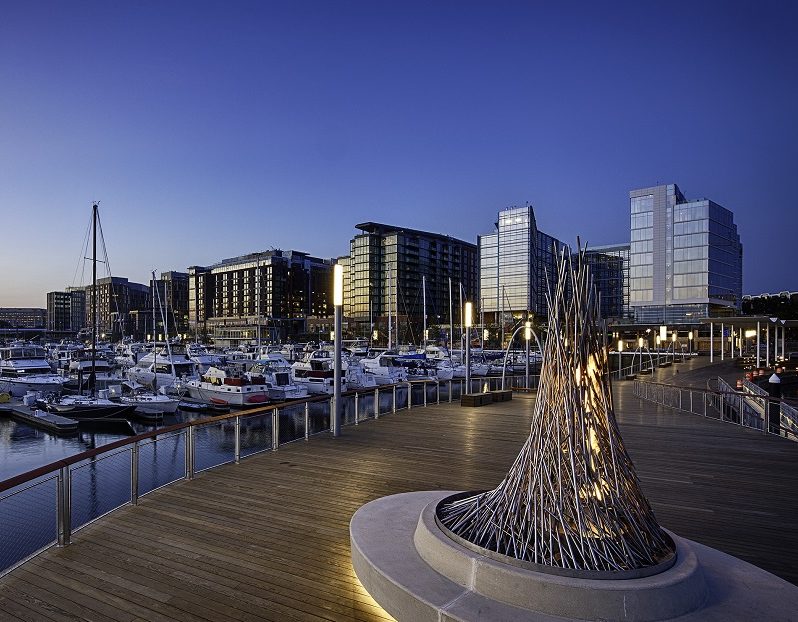Supersized Submetering on the Washington Waterfront
A scaled-up program at a $2.5 billion mixed-use development generates creative solutions plus valuable lessons.
By Nancy Crotti

Some 450 submeters were installed during the first phase of The Wharf, a new $2.5 billion development in Washington, D.C. (View of The Wharf from District Pier, courtesy of Hoffman-Madison Waterfront. PRNewsfoto/The Wharf)
Submetering a multi-use development is attractive for a variety of reasons. When tenants pay for exactly the utilities they’re using, it helps eliminate bickering over estimates based on square footage, promoting more efficient, sustainable operations.
The principle seems simple enough. Yet installing sub-metering into a large, complex development is another matter entirely, as the developers of The Wharf, the $2.5 billion, mixed-use development on the Potomac River in Washington, D.C., can attest.
Hoffman-Madison Waterfront, the development team led by PN Hoffman and Madison Marquette, opened the first phase of The Wharf in October 2017 with two office buildings, two apartment towers, two condominium buildings, three hotels, a 6,000-seat concert hall, eight restaurants, nine retail stores and about 450 sub-meters. Additional restaurants, retail and other elements have opened since then.
Although the large number of submeters didn’t bust the budget, it may be unusual, even for a project of The Wharf’s scale. “In this first phase, we erred on the side of really trying to capture as many of these end users as possible,” explained Eric Potkin, senior design and development manager for PN Hoffman.
“I think that in the second phase of The Wharf development we can sort of have a little more foresight in the initial design, and lump some utilities together,” he added.
All in the Timing
An even larger challenge was sequencing. Although the idea of submetering the property was on the radar early in the project, “it wasn’t fully fleshed out until well down the road,” Potkin added. “I think we were a little behind the curve as far as getting the installation part of this project off the ground.”
As a result, the buildings’ mechanical systems were up and running before the meters could be installed. Operating systems needed to be shut down, water lines had to be drained, and coordinating schedules with other trades was paramount, according to Champion Utility Billing Services of Hobe Sound, Fla., the submetering and billing services company that oversaw the installation. Sub-Metering System Maintenance and Repair Technicians (S.M.A.R.T) of Stuart, Fla., served as the subcontractor.
“It was one of the biggest things we had to deal with on site,” said Jonathan Velez, a senior technician with Sub-Metering S.M.A.R.T. The specialty contractor was tasked to install submetering for The Wharf’s disparate uses and identify the equipment that would provide the best possible performance.
Design for The Wharf’s second phase is already underway. At full build-out, scheduled for 2022, the development will consist of 14 separate buildings housing residential, office, hotel, retail and private event space. A promenade with more than 50 restaurants and shops will stretch for a mile along the waterfront. Also on the agenda are parks, piers, docks and a marina.
On the sustainability front, The Wharf will include a co-generation plant, solar panels, energy-efficient lighting, and a cistern system to collect rainwater that will cool two of the residential towers and create wetlands for animal habitat and water-pollution abatement. For the developers, the experience has provided some valuable lessons.
“With any project, there’s always some lessons learned at the end,” Potkin said. “Moving forward, I think there are ways to even enhance the engineered design on some of these buildings from the ground up so that we maybe don’t need to do as much sub-metering but we’re able to capture all the end uses.”







You must be logged in to post a comment.